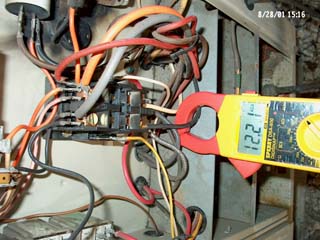The device on your Thermostat called the “heat anticipator” is a small electric heater that uses the current of the gas valve or oil burner primary to cause the Thermostat to drop out the heat before the room temperature overshoots. The reason for this is that furnaces are usually sized larger than they need to be. Usually, the heat anticipator setting is set to the current draw on the gas valve.
The way to find out what the current heat anticipator setting is is to look at the gas valve or oil burner primary. If you can’t find the amp rating, then you can take a clamp-on ammeter with ten turns of wire around it and measure the current. Keep in mind that the setting can be changed depending on the size of your furnace in relation to the size of your house.
If it has been moved to a lower number, that will cause the burner to short cycle; a larger number will make it run longer. The way to know is to remove the cover on the Thermostat and watch the mercury bulb to see if it is falling into the off position. If it is not, check to see if the limit is opening.
The correct way to set the heat anticipator setting on your Thermostat is to measure the current draw of the gas valve or oil burner plus the heat assist device if it has one. If you have a clamp on the ammeter, wrap 10 (ten) turns of wire around the pick-up and read the current and divide by 10.

Example: 6 amps = 600MA or .6 amps. Set the scale on your Thermostat to this number but don’t be afraid to change it if you have too short or long a cycle.
WARNING: If you short-circuit the gas valve terminals or oil burner W terminal, you will burn out the heat anticipator. You will have to replace the Thermostat! This is how an HVAC technician can sell you a new thermostat too.
Sometimes the gas companies change the BTU content of the gas too. Check your Thermostat; under the cover is a little electric heater called the anticipator. Its job is to cause the Thermostat to turn off the burner before the temperature can overshoot. You will find them on forced air systems that use gas, oil or electricity. Some hot water (hydronic) systems don’t have them, and most heat pump systems do not use them except for the backup heat function.
The heat anticipator setting is set to the current draw on the gas valve or oil primary. If it has been moved to a lower number, that will cause the burner to short cycle. The way to know is to remove the cover on the Thermostat and watch the mercury bulb to see if it is falling into the off position. If it is not, check to see if the limit is opening.






